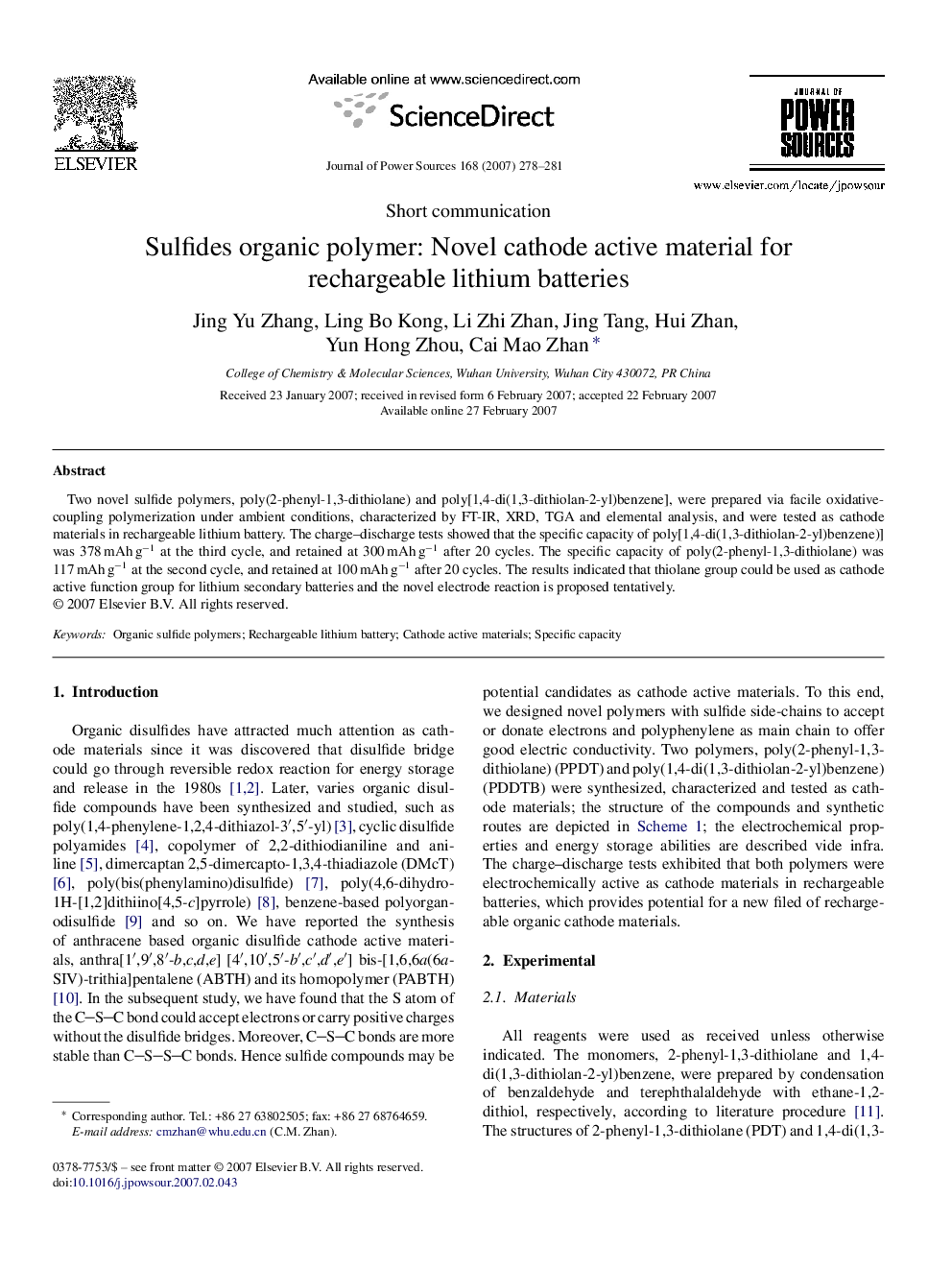| Article ID | Journal | Published Year | Pages | File Type |
|---|---|---|---|---|
| 1286559 | Journal of Power Sources | 2007 | 4 Pages |
Two novel sulfide polymers, poly(2-phenyl-1,3-dithiolane) and poly[1,4-di(1,3-dithiolan-2-yl)benzene], were prepared via facile oxidative-coupling polymerization under ambient conditions, characterized by FT-IR, XRD, TGA and elemental analysis, and were tested as cathode materials in rechargeable lithium battery. The charge–discharge tests showed that the specific capacity of poly[1,4-di(1,3-dithiolan-2-yl)benzene)] was 378 mAh g−1 at the third cycle, and retained at 300 mAh g−1 after 20 cycles. The specific capacity of poly(2-phenyl-1,3-dithiolane) was 117 mAh g−1 at the second cycle, and retained at 100 mAh g−1 after 20 cycles. The results indicated that thiolane group could be used as cathode active function group for lithium secondary batteries and the novel electrode reaction is proposed tentatively.
